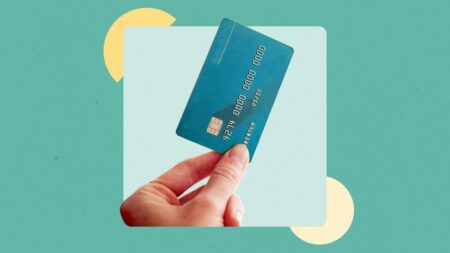Later today, the Federal Reserve’s Federal Open Market Committee (FOMC) is likely to authorize its first interest rate cut since 2020, likely either a quarter or a half of a percentage point. The FOMC increased the federal funds rate by a cumulative 5.25 percentage points in 2022 and 2023 in an effort to fight the hottest inflation readings in four decades. The medicine has worked, but it has left a bitter taste in the mouths of Americans with credit card debt. Unfortunately, lower rates won’t make it much easier to pay off this debt anytime soon.
The average credit card rate is 20.78 percent, ever so slightly below the all-time record set last month. Credit card rates tend to mirror Fed actions, so cardholders should expect their rates to fall by either a quarter-point or a half-point within the next month or two.
Why minimum payments aren’t enough
There’s still some debate regarding the size of the FOMC’s initial cut, but it won’t make much of a difference in the credit card market. If someone has the average credit card balance ($6,329, according to TransUnion) and only makes minimum payments at the average rate of 20.78 percent, they’ll be in debt for 218 months (more than 18 years) and will owe $9,504 in interest.
If the rate falls to 20.53 percent, that would only reduce the monthly minimum by about $1 and would trim just $122 off the total interest expense over those 18 years.
If the rate falls to 20.28 percent, the monthly minimum would be $3 lower than at 20.78 percent and the total interest expense would only decline by $244.
Seek to pay in full every month if at all possible. Half of cardholders typically do that, according to Bankrate’s 2024 Credit Card Debt Survey. Credit cards really work for these people, in terms of valuable rewards programs, convenience and buyer protections (everything from extended warranties to purchase protection, travel insurance and more).
Sadly, the other half of cardholders can easily become trapped in an expensive debt cycle. Our research shows that 6 in 10 people with credit card debt have been in debt for at least a year (up from 50 percent in 2021).
How to pay off credit card debt
If you have credit card debt, first of all, don’t be ashamed. You have plenty of company and people typically get into credit card debt for one of two practical reasons: emergency expenses (such as medical bills, car repairs and home repairs) and/or essential costs such as housing and groceries outpacing their paychecks.
Regardless of the cause, it’s crucial to come up with a plan to pay down this debt as quickly as possible. My favorite tip is to sign up for a credit card with a generous 0 percent intro APR balance transfer promotion. These promotions allow you to transfer your balance to a new credit card (usually for a fee) and avoid paying interest on that balance for a set time period. After that intro period ends, however, you’ll have to pay interest on whatever balance still remains on the card.
But some of these promotions last as long as 21 months, including the Wells Fargo Reflect® Card (0 percent intro APR on qualifying balance transfers made within 120 days of account opening, regular ongoing variable APR of 18.24, 24.74 or 29.99 percent and a balance transfer fee of 5 percent with a minimum of $5), and the Citi Simplicity® Card (0 percent intro APR on transfers made within four months of account opening, regular variable APR of 19.24 to 29.99 percent and a balance transfer fee of 3 percent or $5, whichever is greater).
Nonprofit credit counseling is a solid backup plan, especially if you have a lower credit score (below, say, 670) or a lot of credit card debt (more than $5,000 or $6,000). Reputable agencies such as Money Management International and GreenPath can often negotiate something along the lines of a 7 percent interest rate over four or five years.
Where rates were and where they’re headed
In mid-March 2022, just before the Fed started its latest rate-hiking campaign, the average credit card rate was 16.34 percent. It’s now about 4.5 percentage points higher (and many cardholders are actually facing rates that are 5.25 percentage points higher; the national average hasn’t moved as much due to a few technical factors). In other words, credit card rates have gone from bad to worse.
There’s still considerable uncertainty regarding the depth and pace of rate cuts, but it’s safe to say that it’s going to take a while for the Fed to unwind all of those increases. Credit card rates will continue to be much higher than other products such as mortgages and auto loans, mostly because credit cards represent unsecured debt. There’s not an underlying asset on the line as collateral, such as a home or car, so card issuers compensate for the added risk by charging higher rates.
According to the CME FedWatch tool, investors’ best guess is for approximately 2.5 percentage points of cuts over the next year. It could be a little more or a little less, but it’s extremely likely that the ride down will be a lot slower than the rapid series of rate increases we experienced in 2022.
The bottom line
Credit card rates are going to remain high for the foreseeable future. While the average credit card rate could soon fall below 20 percent, it’s likely to remain in the high-teens for quite a while. Credit card debt will still represent most Americans’ highest-cost debt by a wide margin. Fed rate cuts won’t ride to your rescue, so if you have credit card debt, it’s up to you to pay it down as quickly and cost-effectively as possible.
Have a question about credit cards? E-mail me at ted.rossman@bankrate.com and I’d be happy to help.
Read the full article here
















